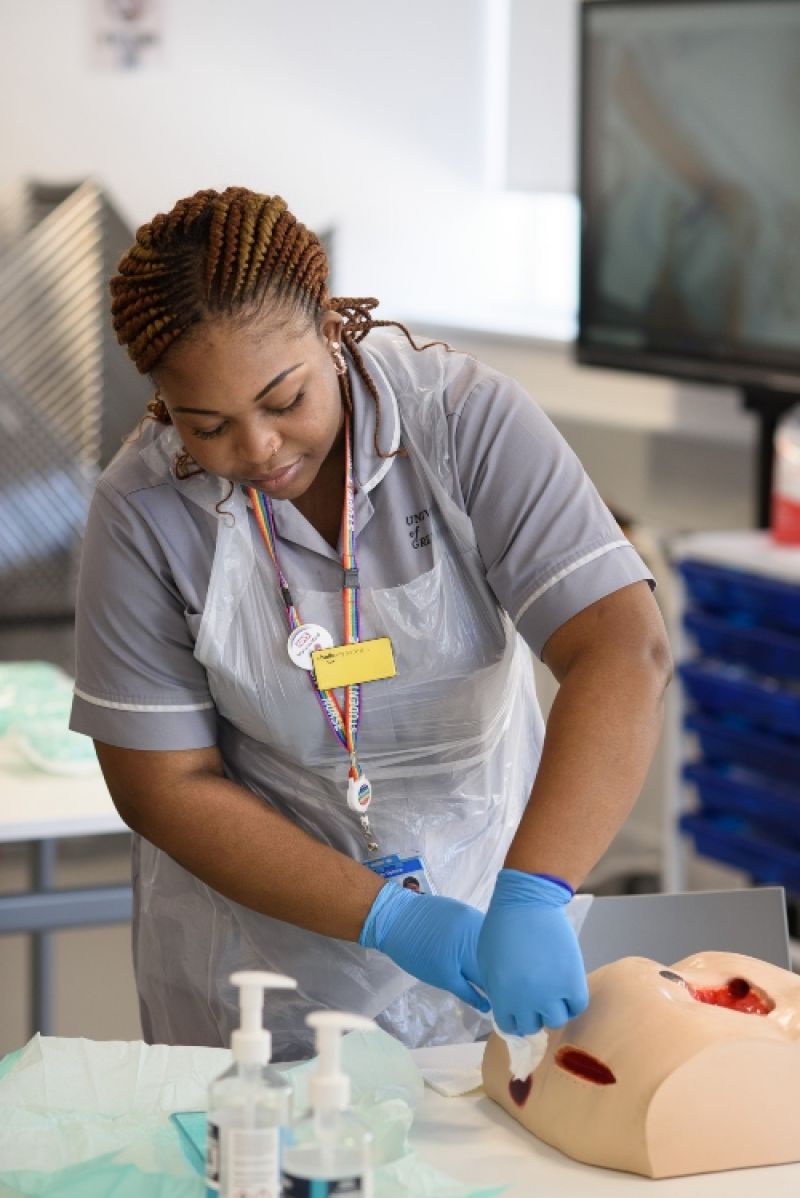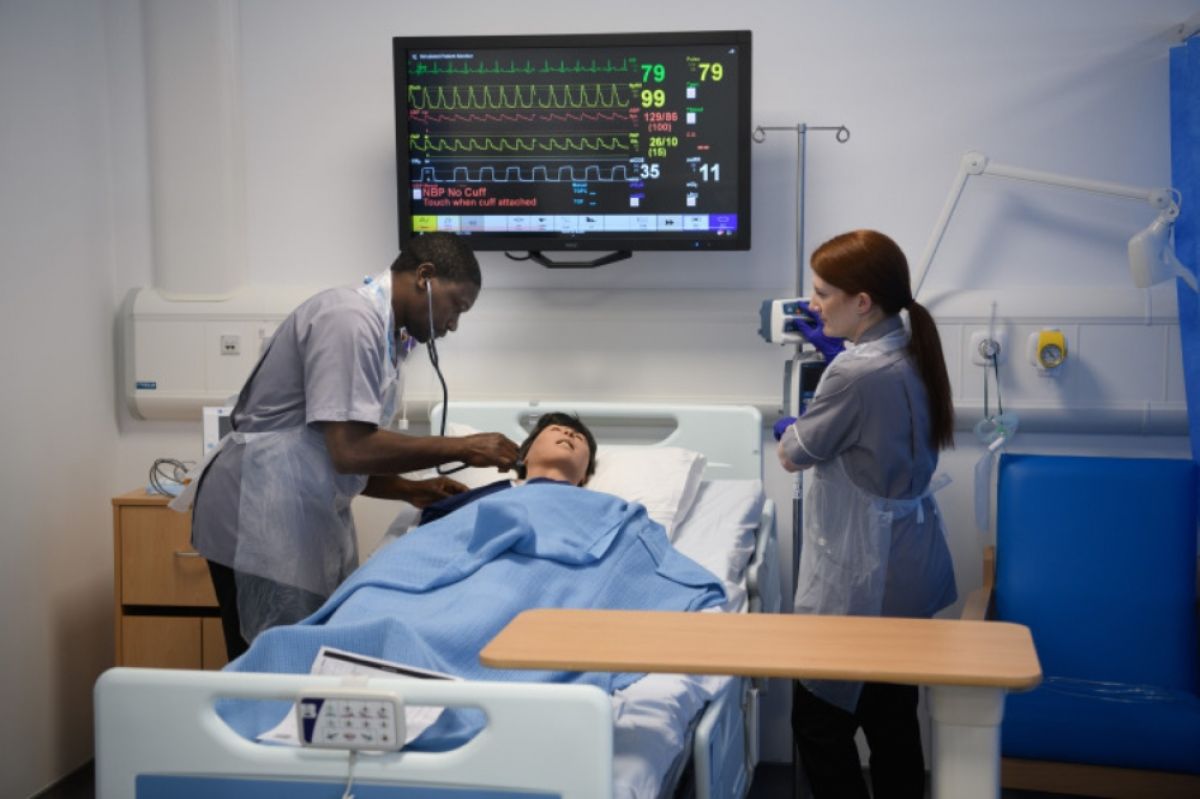
What do we do? The University of Greenwich plays a key role in educating and training the health and social care workforce with over 2,000 learners studying on professional practice programmes at any one time. Simulation is a highly effective approach to bridging theory and practice which is fundamental to all our health-related courses. The recent investment by the university in our simulation infrastructure and facilities is central to our success as educators for the current and future NHS workforce. The investment will also enable us to advance the field of simulation through research enterprise, and knowledge exchange activities.
Who are we? The Greenwich Learning and Simulation Centre (GLASC) is situated in the School of Health Sciences at our Avery Hill and Medway campuses. The Centre is led by a team with wide ranging expertise in the technical and operational aspects of simulation, simulationbased education, simulation-based research, transformative simulation, the development and commercialisation of simulation tools, and the use of simulation for knowledge exchange.
Our facilities Our facilities are state-of-the-art employing the latest technology, equipment and flexible clinical and domestic spaces across a broad range of health-related contexts. Through a combination of realistic environments, virtual and mixed reality with lifelike manikins and video feedback, our students can work through evolving scenarios to challenge and develop their practice. Alternatively, researchers can observe and manipulate the healthcare environments and scenarios to improve, test and develop the field.
Connected and sustainable Our audio/video systems feature energy efficient power supplies, amplifiers, video matrix and automated system shutoffs, all of which contribute to the University of Greenwich’s overarching goals of environmental responsibility and sustainability. GVAV uses various advanced technologies to display high quality images, higher quality sound, systems that are easy to control, and work reliably with 100 percent of the systems capability being assigned. Our system is modular by design so has the capability to be upgraded for future technologies or expansion.
Inclusivity and culture Our strategy is to ensure that our simulation facilities and equipment represent reality from a technical, environmental, emotional, cultural and social perspective. Healthcare is full of diversity, and we want to replicate this to ensure an authentic and familiar experience. Traditionally, simulation manikins have been generic in appearance, and therefore not representing the full spectrum of individuality in our society. Even today it is difficult to find realistic BAME manikins in simulation facilities. We have therefore worked with industry partners to develop a range of BAME and culturally inclusive simulation manikins. In addition, we draw on the sim-versity toolkit to develop and assess our approach throughout the spectrum of our activities.
Student success The aim of GLASC is to extend learning opportunities to equip students with all the skills and knowledge they need for entering the workforce by bridging the gap between theory and practice to meet students’ educational needs. This is achieved through replicating safe and realistic healthcare environments for students to practice and learn, developing their competencies and confidence to the highest level.
Impact Through our simulation activities we can monitor the impact that it has on our students, the healthcare workforce, and ultimately patients. We have developed a cyclical system where we use simulation to explore healthcare to identify where improvements can be made or where new ways of doing things need to be translated into simulated training for our students to have a better comprehension of the workforce requirements. This approach allows us to be agile to change and therefore our impact is timely and relevant.
Research Within the Centre for Professional Workforce Development (Institute of Lifecourse Development) we have a dedicated Simulation Group that focuses on research and innovative simulation solutions. The Group has a diverse membership that work together to advance the field of simulation drawing on their different experiences and expertise. The Group is continuously growing, and new members (internal and external) are always welcome.
Knowledge exchange We plan to use our simulation tools and techniques to engage our local community, members of the public, patients, and healthcare partners in joint ventures that benefit all.
Industry partners We work closely with our industry partners to understand gaps in teaching provisions, working collaboratively to develop simulation tools and products that further improve the simulation experience and learning objectives. We have ambitions to become a centre of excellence for multiple industry partners, also acting as a beta testing site, to provide student, academic and technical feedback on current products and tools.
We are continuously monitoring, developing, and evaluating our facilities and resources to ensure that we have the tools learners need to conduct high-quality simulation. Our current facilities and resources include:
- Three large, five-bedded, inpatient wards looking after Adult general; Midwifery ante and post-natal; and Paediatrics, including neonatal special, high and intensive care patients
- Six clinical skills simulation suites
- Three triage or patient consultation rooms
- A fully functioning one bedroom flat with patient hoist system
- A static ambulance installation
- CAE patient simulators including birthing simulators with augmented reality
- Patient communication simulators within virtual reality
- Lifecast hyper realistic patient simulators
- Trauma moulage including self-harm injuries
- Psychiatric intensive care furniture
- Bariatric and older patient adult simulators
- Static and mobile video and audio capture for debriefing across all the facilities
- Technical support.
To ensure that the equipment and facilities we use to conduct high-quality simulation meet learners’ needs we work closely with industry. We currently have partnerships with various simulation-focused companies and are always open to mutually beneficial partnerships.
Virtual tour of one of our simulation centres - coming soon!


